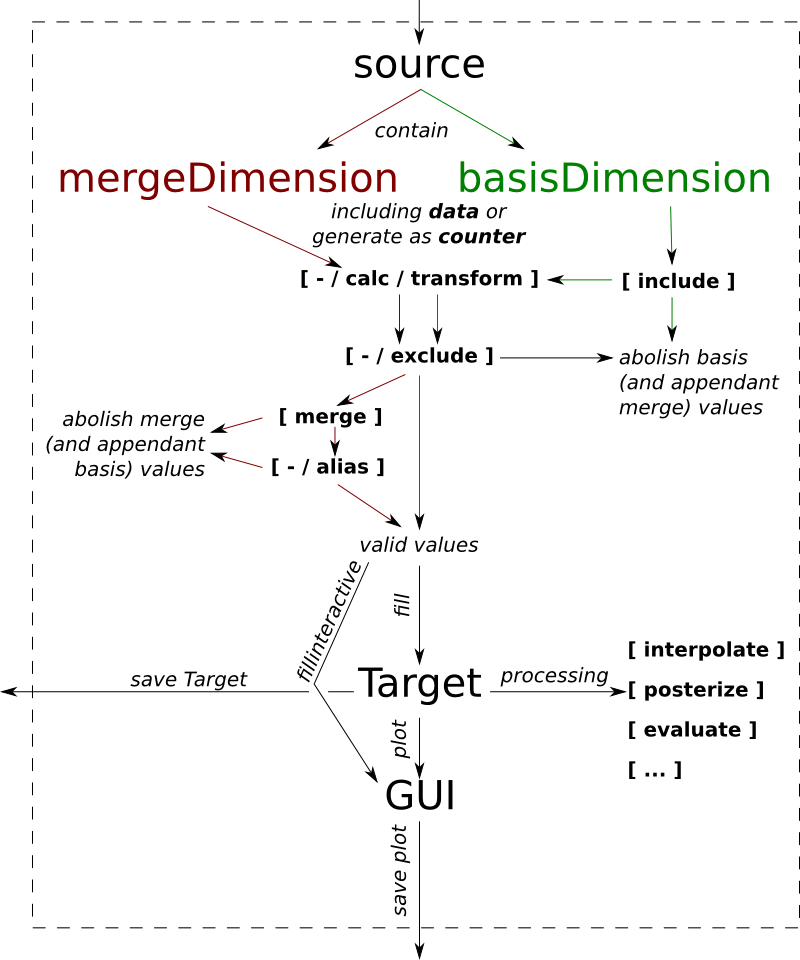Introduction¶
The basic idea of diaGrabber is shown in the following image and will be described now.

Imagine to have some data, maybe stored in a file or generated through a stream. diaGrabber calls this source. Each source includes values sorted in basis- and mergeDimensions. See diaGrabber.source._dimension for more information.
The values of the source were stored in a target which usualy is a matrix. See diaGrabber.target for more information. It is possible to filter the values before they are stored in a target. Some of those filters are:
- include: only take values in a range [from,to]
- exclude: exclude values which fullfills some criteria
- It is also possible to process the values via:
- calc
- transform
These methods are callable through the dimension-classes. For the methods see diaGrabber.source.methods.
Once the source-values are stored in a target you can do some operations on it. See matrixMethods for everything possible.
Finally you can visualize the target with The Graphical user interface.
You get all possible methods of all modules used in diaGrabber at The diaGrabber-API:. Another possibility is to (install and) open an interactive python-shell, like iPython or IDLE and to import diaGrabber in it via:
import diGrabber
diaGrabber.
and then pressing the [TAB]-key shows all possible classes and functions including its docstrings.
To import all necassary moduls directly type:
from diaGrabber import source, target, plot
from diaGrabber.source.methods import merge, calc, exclude, transform
